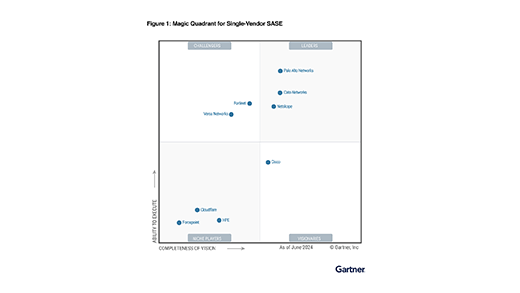Today, in the heart of London, I caught sight of a screen on platform four at Vauxhall train station. On it was displayed a busy illustration of the marvels of modern transportation: trains moving seamlessly across multiple lines; their positions, destinations, and tracks all displaying tightly orchestrated precision in real-time. It was a compelling depiction of the complexity of a public rail system on a small island–a tightly woven network where data integrity is paramount.
At the core of these systems are Internet of Things (IoT) devices–the trains themselves. These trains–or at least their digital shadows–are monitored and potentially even controlled by external applications, likely residing on cloud platforms such as AWS, Azure, or GCP. Unlike the vast majority IoT devices, these trains have the colossal responsibility of transporting hundreds of thousands of human lives across the country, and it is this human risk factor that serves to highlight the delicate and complex task of ensuring that the data exchanged between these IoT devices and cloud-based command centers remains uncorrupted, and retains its integrity.
Data integrity in public rail systems is not just about the accuracy of train locations or schedules; it’s about safety, reliability, and public trust. A single glitch in data can lead to misrouted trains, delays, or, in the worst case, accidents. It seems obvious therefore that protecting this data from corruption, unauthorized access, or manipulation is of utmost importance.
This is where those professionals who are in charge of the cybersecurity and infrastructure come into play, tasked with safeguarding the data lifeblood that powers these essential transportation links. And the ability (and indeed agility) to identify and address vulnerabilities or misconfigurations in cloud-based software and systems is crucial. Because let’s face it, today our IT networks are often really just software, even if we give them the grand title of “Digital Infrastructure.”
The more I pondered the risk factors faced by a rail service provider (and I’d boarded my train to Leatherhead at this point so I had plenty of time to think) the more complexity I found. Rail networks (at least in the UK) are vast, with various rail companies and rail networks trying to work together. Every point of integration increases their vulnerability and the rapid detection and mitigation of vulnerabilities is key to maintaining the system’s integrity.
Now, the example of the modern rail system serves as a compelling case study, but it’s crucial to recognize that the principles of modern cybersecurity apply equally across all sectors of national critical infrastructure. This includes energy, water, health services, and telecommunications, and each of these sectors relies on a complex Operational Technology (OT) ecosystem, whether it be smart energy grid control systems, water pump controllers, or medical imaging devices. All these are now connecting to software, more often than not controlled in the cloud.
Like the rail system, these infrastructures are vital to the population of the nation’s well-being and security, underscoring the need for rigorous cybersecurity measures.
The integration of advanced technologies into these critical sectors brings immense benefits, but it also exposes them to sophisticated cyber threats. Ensuring data integrity, rapidly addressing vulnerabilities, and implementing micro-segmentation are strategies that must be universally adopted through zero trust principles. The goal is to create a resilient infrastructure that can withstand and quickly recover from any cyber incident, thereby safeguarding public safety and national security.
In order to take on this monumental task, we can start with looking in a number of key areas:
1. Understanding and mitigating risks in critical national infrastructure
The security of critical national infrastructure (CNI) spans various sectors, each vital to the nation’s safety, operations, and economy. The potential impact of compromised systems or infrastructure can range from safety concerns to operational disruptions, financial losses, and legal ramifications. Assessing the risk involves evaluating the threat actor’s capability and intent against existing defenses and security controls. This assessment considers potential vulnerabilities such as undeleted user accounts, access control list issues, unpatched software, and malware, among others.
UK operating companies are legally bound by the NIS regulations, 2018, with guidance from the NCSC and the Cyber Information Security Partnership (CISP).
In Europe, the NIS2 Directive is specifically designed to ensure standards in cybersecurity for CNI. You can read more on that one in last week’s blog post.
The USA has Critical Infrastructure Protection (CIP) standards, developed by the North American Electric Reliability Corporation (NERC) for the electrical sector. These standards are mandatory and enforceable across the United States.
In Australia, there is the Security of Critical Infrastructure Act 2018. This act is designed to manage the complex and evolving national security risks to Australia’s critical infrastructure.
Whatever your region, looking at your local standards and regulations or even using those above as a benchmark will help.
2. International Threats and Advanced Persistent Threats (APTs)
The United Kingdom’s National Cyber Security Centre (NCSC) and the United States’s Cybersecurity and Infrastructure Security Agency (CISA) identify state-affiliated actors, particularly from China and Russia, as significant cyber threats, though their focus varies from harvesting personal information and intellectual property to direct cyber attacks on infrastructure.
In addition to state-sponsored actors, the unregulated cyber environment in certain countries fosters the growth of hacktivist gangs and APTs, which leverage sophisticated tactics to exploit vulnerabilities in both cloud and on-premises systems. The disruptive impact that targeting Critical National Infrastructure would have (alongside their adoption of cloud-based infrastructure) makes these organizations a target for threat actors who wish to cause such civil discourse.
Cybersecurity professionals must maintain best practices in access control, system configuration, and patching, evidenced by certifications like the UK’s Cyber Essentials, to mitigate these threats.
3. Emerging Threats and Defensive Strategies
The adoption of AI by hackers increases the frequency and complexity of cyber threats, underscoring the need for up-to-date cyber defenses. Components like Microsoft Entra ID (Microsoft’s rebrand of Azure AD) play a crucial role in access control, which means that any compromise would pose a significant threat to system availability. Moreover, the risks of phishing, malware, zero-day threats, and ransomware demand comprehensive security measures, including sophisticated defense mechanisms, cyber awareness training, and robust backup and recovery plans.
Safeguarding our critical national infrastructure requires a multi-faceted approach, combining rigorous risk assessment, adherence to legal standards, vigilance against international cyber threats, and the implementation of advanced security technologies and best practices.
So while the screen on platform four at Vauxhall initially got me thinking about the cyber security challenges faced by public rail systems, the more I thought about it, the more I realized that the lessons and strategies they must adopt are applicable across the entire spectrum of Critical National Infrastructure. As these systems continue to transform and evolve, the collaborative efforts of cybersecurity professionals, technology providers, and infrastructure operators are essential in maintaining the safety, reliability, and trust that society places in these fundamental services.




 Retour
Retour 
















 Lire le blog
Lire le blog